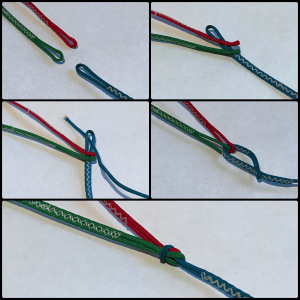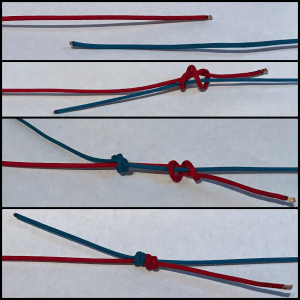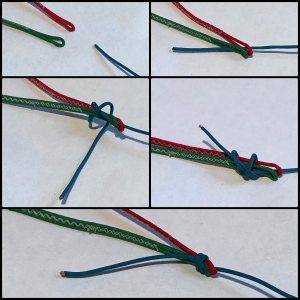So, it’s not like we do it often. But it sometimes happen. Hooking the line on a branch, stone or root at the start place. It can happen to everyone. And the line sometimes allows and rupture, it is not steel … But the holiday just started and the situation needs to be solved. How to do it?
REPLY
Ideal solution. You will replace a broken one with a new one. Remove the old one and put the new one. It’s a simple system of foxholes and the need is just a pair of pliers to allow the harness on the straps. But most likely, you do not have all the spare line to your glider (all lengths and thicknesses, about 300 m in total, it would be a nice ball). So you have about one – two thick long lines in the lower gallery and a few thin ones in the upper gallery. Such replacements are ideally stitched at one end and the other end free – there you have to finish and set the length with a suitable knot.
TIE DOWN
Just a line to tie the knot is not going to be a very good solution because you would shorten it enough and the paraglide would not fly straight. But if you do not have a long cord to replace the full length, you can replace that shorter broken end of line and leave a reserve for it on the knot.
LET IT BE
If you already fly and you look up and see the ruptured line . Probably in the upper gallery of drivers or rear row (C, D) lines. It was probably at the start when the line caught behind the stone or root and ruptured. If you’ve noticed it during the flight, it’s probably a negligible influence on the glider management and you can ignore it until the end of this holiday. Surely, do not interrupt a well-flown flight, this will not be the cause of some misfortune.
HOW TO DO IT
The lines are joined together with the eyelets on the canopy by the The Lark’s Head Knot. That’s simple: push your eyelid through the eye, then pull through the other end and pull and pull until you tighten. At the other end, the eyelid simply puts a snap on the harness on the strap. So if you want to replace a string, you need to break this chain from below. That’s the carabiner. Unscrew, unpack, untie the bottom lace, untie the middle gallery lines, and then get to the top gallery where you can only untie the line from the eyelet on the canopy. Draw a new one – move the other way, that is, from the canopy – two or more of the top gallery lines converge and tie them together with one drawer of the lower gallery. Once again, two or more of them are tied down with the lower line. In addition to driving, fortunately, there are only one or two branching (galleries), but it is quite a challenge to confess and not to mute it. Put the lines in a snug fit in the snap hook and tighten it so that it does not allow, but not completely “on the blood”.
KNOTS – HOW TO USE IT
The Lark’s Head Knot, as described above, will only serve you with stitched eyelids.Two free ends are best recommended to bind the double The Fisherman’s Knot. It’s a bit more complicated, but strong enough to hold even without other bulky insurance junctions.
The line that I have a free end where I need an eye is attached to the opposite eye by a combination of Lark’s Head Knot and Fisherman’s Knot as shown.
In the last two cases, you must set the correct line length. By matching it with the same line on the other side of the glider (mirror-like).
IS IT SAFE?
Suppose that we are holding by 7 strong lines on each side. Their capacity is 130 kg. The stitched eyelet weakens the strength at least, perhaps by 5%, with a bit of strength losing the knot – where they are crossed with the upper gallery. By subtracting and multiplying it all, we are going to get much more than the standard required by 8 G. Let’s say I have a TOW of 100 kg. So I need the lines to carry 200 kg of steady sliding flight. Divided 14, we have about 14.3 kg per line. Lots of 5 G, which I can actually achieve in a sharp spiral = 70 kg. So on a new strong string I can afford one knot o do (knot reduces its strength to about 55% of the original strength). And I will not do a spiral with him. This trip I can fly with this solution and as soon as I order a new cord to the manufacturer and at home I will immediately exchange it.



